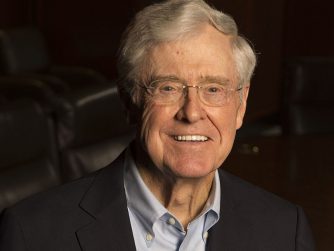I want to begin disseminating some of my research over the past two years. I have been focusing on the integration of emerging sciences and scripture to develop a theology of transformational change. What I find wonderfully interesting is that in this area, science and theology play nice. The neurosciences fit well with much of scripture. The area of emotional intelligence flows well with scripture. Generational sin is found in scripture. Communication science plays well with scripture.
I want begin by discussing my last paper and talk about designing communication environments. And I want to begin this discussion by describing how we construct reality.
What we see is not reality. Instead, our brains combine information from our eyes with data from our other senses, synthesize it, and draw on our past experience to give us a workable image of our world. (1) What we “see” in the world, then, is really a function of our brain, an image that integrates past experiences, memory, cultural learning and other multi-sensory information. What a person perceives or sees is not the world. It is actually a prediction of what should be in the world based on what a person has experienced. This prediction is constantly tested by action. (2)
Television gives us an example of how this works. People typically misunderstand thirty percent of what is shown to them. A person’s emotional state, mindset at the time, and prior experience construct meaning for him, but this could be far from the actual meaning the show was trying to express. It is interpreted by the person, but is not what actually exists. As a result, “[we] go about our lives mostly assuming that what we see is what really is, as if there were no intermediary process.” (3)
Meaning is also a function of comprehension. Baruch Spinoza, a 17th century philosopher, and neurologist Antonio Damasio both conclude that reason is founded on feelings. Damasio found through research that “we are not primarily thinking beings who also feel, but essentially feeling beings who also think.” (4)
Spinoza went on to say that “when we comprehend something, we automatically accept it as well. The only choice we have, he thought, is to reject an idea deliberately or not.” (5) Instead of a two-step process of interpreting and then accepting or rejecting an idea, Spinoza articulated that acceptance was part of the interpretation. “If the off switch, which signals ‘no,’ to an idea is not activated, processed information “ possibly emotionally laden via the thalamo-amygdala pathway “ is simply accepted as true.”
Communication research Daniel Gilbert notes a person’s tendency to trust first perceptions is an innate aspect. Our perceptual system is designed to gather information that is necessary for urgent action and as such we are programmed to act first and think later in times of crisis. Since our cognitive system developed from our perceptual system, it may be “geared to accept first and to ask questions later.” (6) The result is that a person has a bias toward accepting what he sees or hears as real. Therefore, “people believe the ideas they comprehend as quickly and automatically as they believe in the objects they see. Only subsequently and with conscious effort do we rationally counteract initial acceptance of ideas.” (7)
What does this mean for you and me and the message we preach?
It means on this side of heaven, there is no such thing as objective truth. It can’t be found. We all construct what we believe based on perception, past experience, emotional states, and what is going on around us. I am not talking of relativism. I am talking of theological humility and understanding how we are as fallen humanity.
The idea of absolute truth is foundational, but we have to understand that absolute truth is found in relationship – relationship to Jesus Christ, because He is the way and the Truth and the Life. When John 8 tells us that we will know the Truth, and the Truth will set us free, he is not speaking of an intellectual understanding. Earlier in the passage Jesus set Himself up as truth, and “know” is a term of relationship, not intellect. That’s not neo-orthodoxy…that’s the Bible. If we are going to know truth, we have to find truth as part of a relationship with Christ, because all truth points to Him.
If, as the research states, we typically misunderstand 30% of a television show, this has huge implications for us and our theological convictions. Let us reduce that by 2/3. Let us agree that we only misunderstand or misinterpret only 10% of our theology. What are the implications? What I find is that it requires a deep sense of humility for me. I can act out of conviction, but it is a humble action, and I have to be humble in how I deal with those who do not believe as I do. Heresy is one thing; but to label someone as liberal when it is two Bible-searching people disagreeing while earnestly struggling to understand the Truth is a judgment, one the Bible warns us about making.
(1) Ann Marie Barry, Visual Intelligence: Perception, Image, and Manipulation in Visual Communication (Albany: State University of New York Press, 1997), 15.
(2) Christopher D. Frith, Making up the Mind: How the Brain Creates Our Mental World (Malden, MA: Blackwell Pub., 2007), 132
(3) Barry, 16.
(4) Ken Smith, Handbook of Visual Communication Research: Theory, Methods, and Media, Lea’s Communication Series (Mahwah, N.J.: L. Erlbaum, 2005), 49.
(5) Barry, 23.
(6) Ibid,23-24.
(7) Ibid, 24.





[…] the past two months, I noted that both our reality and our theology are constructed by our experiences. I have also noted that we are primarily […]
[…] the past two months, I noted that both our reality and our theology are constructed by our experiences. I have also noted that we are primarily […]